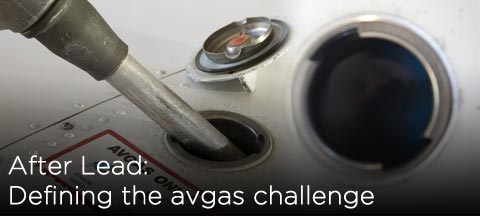
Switching to an unleaded fuel is such a big concept, with so many interlocking parts, and so many priorities to balance, that it’s probably most accurate to describe what’s ahead as a quest, rather than a search or a goal. No doubt this may take awhile. Look at the questions that must be answered; it’s easy to understand why so many different players – stakeholders, in the truest sense – have answered the “All hands on deck” call.
Just as nonpilots are surprised to learn that aviation fuel still contains tetraethyl lead (TEL) long after it was removed from auto fuels, some pilots are just now learning that lead will be gone from avgas one day in the not-too-distant future. They all have questions – and for now, the answers are different, depending on what you fly.
That’s one of the difficulties. Developing a future fuel is not just a question of replacing the octane boost and anti-knock qualities that lead provides. How will the substitute-of-choice affect engines? Can the new fuel be made available and distributed to the fleet at a reasonable price? Will it pass environmental muster, which is what’s driving lead out of 100LL in the first place?
The fuel that works for you must work for the aircraft owner one hangar down. But needs differ. For about 70 percent of the general aviation fleet, a lower octane fuel would do the job. But it’s not the answer for 30 percent of the GA fleet with high-compression engines that need the anti-knock protection provided by 100LL. And that 30 percent is the group that burns a significant portion of the GA fleet’s fuel, as AOPA President Craig Fuller and Senior Vice President of Media Thomas B. Haines discussed in this June 17, AOPA Live video.
“Solving this problem for either side of the equation doesn’t solve it for everybody, and unless you solve it for everybody, you’re not going to have a fuel that’s going to be affordable and viable for everybody,” said Fuller.
It’s not just a matter of octane and preventing damaging knock from high-performance engines, as tetraethyl lead does so effectively. A fuel must reliably work at hot and cold temperatures, be safe for the environment and health, have compatibility with aircraft and materials, and not be prohibitively costly. Tests of potential future fuels are in progress.
Another constraint is economies of scale. When talking about eliminating lead from avgas, it’s a conversation about a total annual production of 250 million gallons of fuel. Compare that to the daily production of automobile gasoline: 300 million gallons. In other words, producing and distributing more than one fuel presents significant hurdles; FBOs and airports would have difficulty supporting infrastructure for multiple fuels, raising questions about the economic viability of multiple fuels.
Next: Why is this happening now?>>
1 2 3


